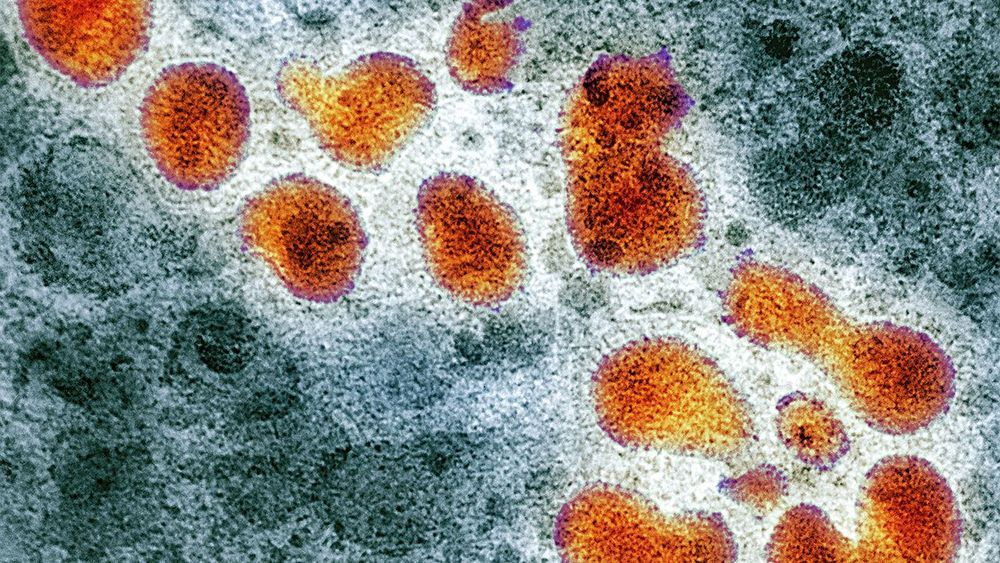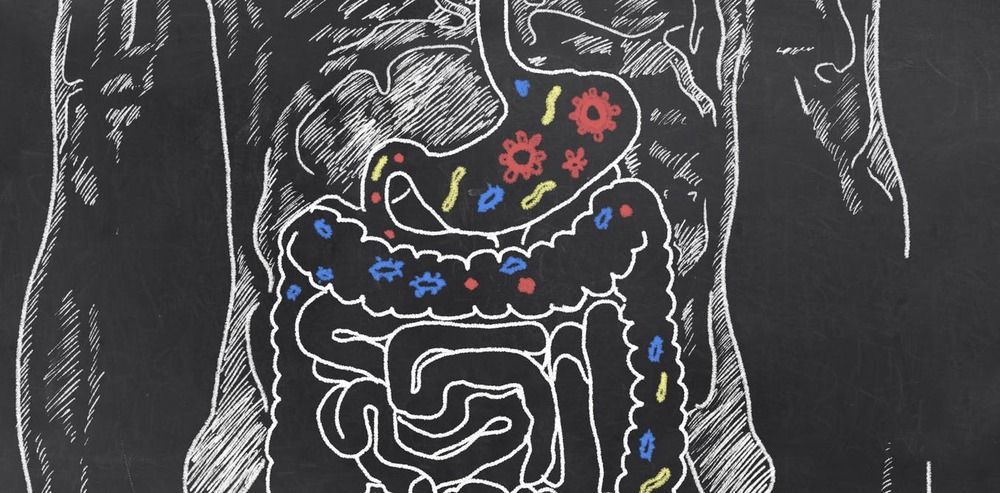Closed-door reviews of risks and benefits of studies should be made public, some scientists say.


Circa 2019 Event 201, hosted by the Johns Hopkins Center for Health Security, envisions a fast-spreading coronavirus with a devastating impact.
Back in 2001, it was a smallpox outbreak, set off by terrorists in U.S. shopping malls. This fall, it was a SARS-like virus, germinating quietly among pig farms in Brazil before spreading to every country in the world. With each fictional pandemic Johns Hopkins experts have designed, the takeaway lesson is the same: We are nowhere near prepared.
Event 201 simulation hosted by university’s Center for Health Security envisions a fast-spreading coronavirus with a devastating impact.

A new study has demonstrated that increasing the expression of a single gene was enough to reverse age-related visual decline in the eyes of old mice.
Introducing ELOVL2
Elongation of Very Long Chain Fatty Acids Protein 2 (ELOVL2) is both a bit of a tongue twister and a known aging biomarker. The results of a new study from researchers at the University of California San Diego School of Medicine suggest that the ELOVL2 gene plays a pivotal role in both the functional and anatomical aging of the retinas of mice and may also have relevance to human age-related eye conditions.

In a 24–10 vote, the House Judiciary Committee approved a bill that would effectively end marijuana prohibition on Wednesday. The Marijuana Opportunity Reinvestment and Expungement (MORE) Act of 2019, or H.R. 3884, was introduced by House Judiciary Committee Chairman Jerrold Nadler (D-NY) and currently has 55 co-sponsors. This is the first time that a congressional committee has approved a bill to make cannabis legal. The MORE Act would federally decriminalize cannabis by removing it from the Controlled Substances Act, and would require the expungement of past federal cannabis convictions.
The bill would also establish a Cannabis Justice Office to administer a program to reinvest resources in the communities that have been most detrimentally impacted by prohibition, funded by a 5% tax on state-legal cannabis commerce.
Moreover, it will allow the Small Business Administration to provide loans and grants to cannabis-related businesses and support state and local equity licensing programs, and would permit doctors within the Veterans Affairs system to recommend medical cannabis to patients in accordance with applicable state laws.

Researchers say the virus spreading through China is in the same family as SARS and closest to one found in bats. Discovery: Today, researchers led by Zheng-Li Shi at the Wuhan Institute for Virology posted a paper describing the virus in detail for the first time, including a picture of the virus infecting cells. The new virus, dubbed nCoV-2019, is in the same family as SARS—a coronavirus that caused global mayhem starting in 2003—and even uses the same receptor to hack into a person’s lung cells, Li’s team found.
Discovery: Today, researchers led by Zheng-Li Shi at the Wuhan Institute for Virology posted a paper describing the virus in detail for the first time, including a picture of the virus infecting cells.
Genomics and BioPharma Pioneer!! — On this ideaXme (http://radioideaxme.com/) episode, I had the honor of being joined by Dr. William Haseltine — biologist, entrepreneur and philanthropist, known for his groundbreaking work on HIV/AIDS and the human genome, now focusing on the issues of healthcare costs, dementia care, and aging — #Ideaxme #Genomics #RegenerativeMedicine #BillHaseltine #Dementia #Biotechnology #Harvard #JamesWatson #WalterGilbert #DavidBaltimore #MIT #CraigVenter #Health #Wellness #Regeneration #Longevity #Aging #IraPastor #Bioquark #Regenerage
Ira Pastor, ideaXme exponential health ambassador, interviews Dr. William Haseltine, American biologist, entrepreneur and philanthropist, known for his groundbreaking work on HIV/AIDS and the human genome.
Ira Pastor Comments:
On today’s show we have a thought leader who sits amongst a rare group of people who have been responsible for creating many aspects of the modern biopharma / genomics / regenerative medicine system as we know it today.

Probiotics are live microorganisms, usually bacteria, that can be consumed to offer health benefits.
The ability of certain microbes to confer health benefits on their host was recognized more than 100 years ago. In 1904, Elie Metchnikoff, a scientist at the Pasteur Institute, claimed that Bulgarian peasants lived longer by eating yogurt made from bacteria that served to ferment the milk. Parisians rushed out to buy yogurt in response.
However, the huge variety of bacteria living on the planet was not appreciated back then. More recently, the development of technology that identifies organisms from their DNA has allowed scientists to show that plants, animals, insects and humans can be hosts for many different types of microorganisms.

To better understand the dynamics of bats and potential threats to human health, Goldberg and his colleagues explored the relationship of an African forest bat, a novel virus and a parasite. Their work, described in a report published July 13 in Nature Scientific Reports, identifies all three players as potentially new species, at least at the molecular level as determined by their genetic sequences.
Many viral pathogens often have more than one or two hosts or intermediate hosts needed to complete their life cycles. The role of bat parasites in maintaining chains of viral infection is little studied, and the new Wisconsin study serves up some intriguing insights into how viruses co-opt parasites to help do the dirty work of disease transmission.
The parasite in the current study is an eyeless, wingless fly, technically an ectoparasite. It depends on the bat to be both its eyes and wings. And it plays host to a virus, as the current study shows. For the virus, the fly plays the role of chauffeur. “From a virus’s perspective, an ectoparasite is like Uber. It’s a great way to get around — from animal to animal — at minimal expense and effort,” Goldberg explains.

For the past 10 years, Yale Professors David Spiegel and Jason Crawford have been working on tools to enable the development of glucosepane-cleaving drugs. Kizoo Technology Capital investors say now is the time to advance this groundbreaking research toward the clinic and are leading funding of a new company, Revel Pharmaceuticals Inc., founded by Drs. David Spiegel, Jason Crawford, and Aaron Cravens.
Kizoo leads the seed financing round at Revel, with Oculus co-founder Michael Antonov participating. SENS Research Foundation provided funding to the YaleGlycoSENS group for several years.
The long-lived collagen proteins that give structure to our arteries, skin, and other tissues are continuously exposed to blood sugar and other highly reactive molecules necessary for life. Occasionally, these sugar molecules will bind to collagen and form toxic crosslinks that alter the physical properties of tissues and cause inflammation. As a result, tissues slowly stiffen with aging, leading to rising systolic blood pressure, skin aging, kidney damage, and increased risk of stroke and other damage to the brain.

Researchers have found that aҫaí berry extracts can reduce parasites in the blood and prolong the survival of infected mice.
Thankfully, researchers at the University of Campinas (UNICAMP) in Brazil are actively searching for new treatment options and have stumbled upon some interesting new data that could prove extremely useful in the fight against this persistent parasitic infection.
Amazingly, the researchers found antimalarial in a seemingly unlikely candidate, the aҫaí berry. Findings from the new study—published recently in ACS Omega through an article titled “Chemical Genomic Profiling Unveils the in vitro and in vivo Antiplasmodial Mechanism of Açaı́ (Euterpe oleracea Mart.) Polyphenols”—showed that berry extracts can reduce parasites in the blood and prolong the survival of infected mice.
“Widespread drug-resistant parasite strains push for the development of novel antimalarial drugs,” the authors wrote. “Plant-derived natural products are key sources of antimalarial molecules. Euterpe oleracea Martius (“açaı́”) originates from Brazil and has anti-inflammatory and antineoplastic properties.”